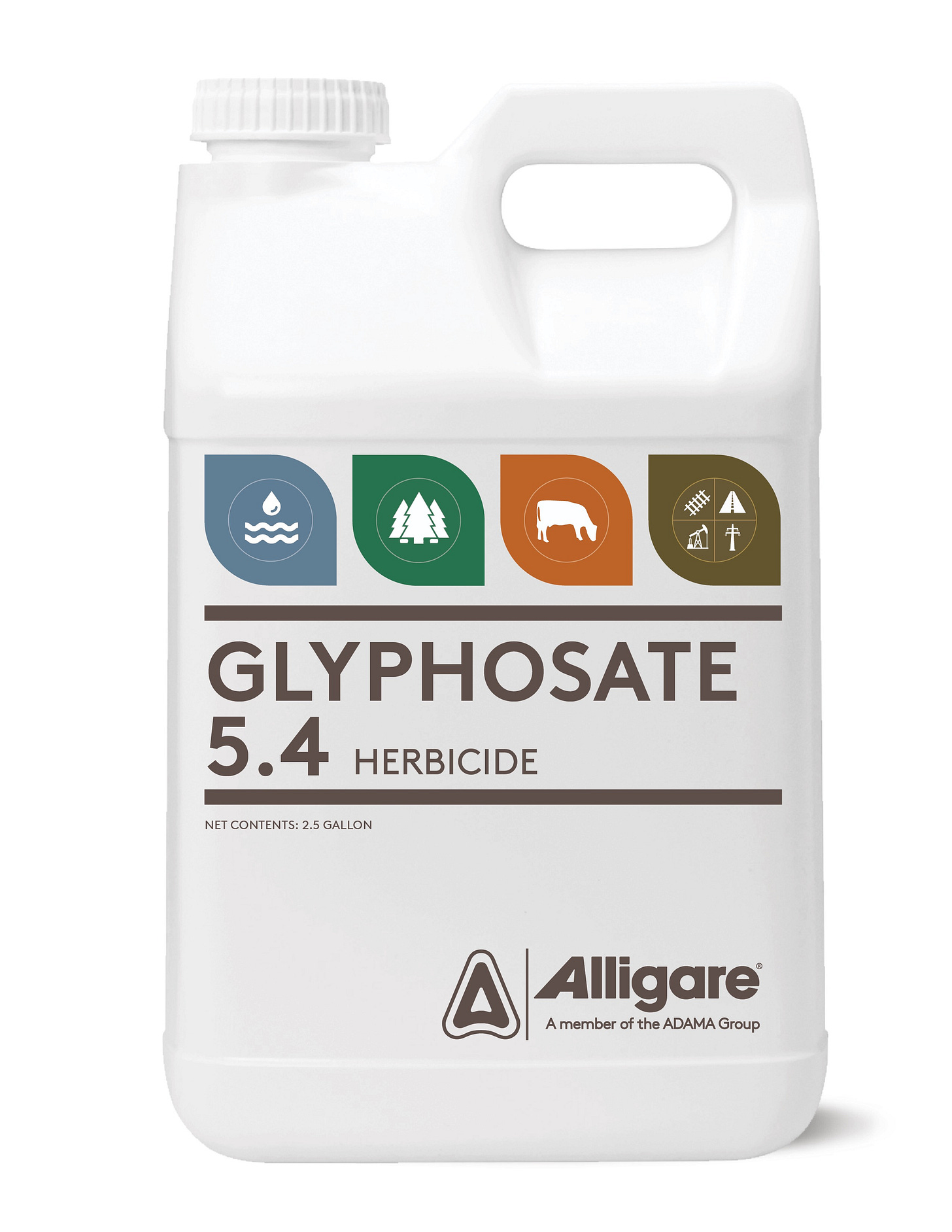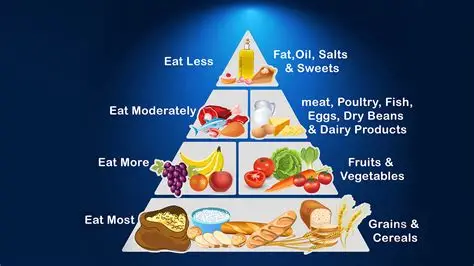Glyphosate is the most commonly used herbicide in the world and the most controversial agrochemical ever produced. Despite the grave dangers it poses to humans and animals, it remains on the market.

It shouldn’t be – for numerous reasons, including the below.
Impact on Soil & Plant Health
Healthy soil depends on a rich diversity of bacteria, fungi, and other microorganisms to cycle nutrients and suppress plant disease. Because glyphosate is a patented antibiotic, it can alter soil microbiomes.
In a six-month field trial, heavy glyphosate use decreased soil microbial biomass by 45 percent and reduced cultured bacteria by 84 percent and fungi by 63 percent compared with untreated soil.
A second field trial reported a drop in fungal species richness and changes in soil fungal DNA profiles after repeated glyphosate treatments, indicating a lasting impact on soil health.
As a chelator, glyphosate can bind essential metals like iron, copper, zinc and manganese in soil, reducing their availability for plant uptake and weakening crop immune defenses. When these nutrient-depleted plants enter the food chain, they can contribute to micronutrient deficiencies in humans and animals.
While glyphosate can persist in the soil for several months, glyphosate-metal ion complexes can persist for up to seven years in water and 22 years in soil. Glyphosate is able to accumulate over time in both soil and crops, raising concerns about contamination of the food supply.
Glyphosate in Our Food
Glyphosate and its breakdown product, AMPA, are routinely detected in our food supply.
Glyphosate residues have been detected in crops that are genetically modified to resist glyphosate such as Roundup Ready® soybeans.

They also appear in crops that are sprayed for desiccation–a process in which glyphosate is sprayed before harvest, sometimes one to two weeks prior, to accelerate drying of cereals and legumes like wheat, oats, barley, and edible beans. This practice can lead to higher residue levels in the final product compared to applications made earlier in the growth season.
To accommodate higher residue levels, Monsanto and other glyphosate registrants successfully petitioned the U.S. Environmental Protection Agency (EPA) to raise glyphosate residue tolerance levels.
For example, the allowable glyphosate residue level in soybeans was increased from 20 mg/kg to 40 mg/kg ensuring crops remain compliant even with heavier spray schedules.
In 2016, an FDA-registered laboratory detected alarming levels of glyphosate in some of America's favorite processed foods such as Trix, Raisin Bran, Special K, Kashi, Ritz Crackers, Triscuit and Goldfish.
Two years later, the Environmental Working Group (EWG) reported glyphosate or AMPA in all 28 conventionally grown oat-based cereals and snack bars they tested–including Quaker Instant Oatmeal and Honey Nut Cheerios.
Although each sample was within the EPA’s maximum residue limit, 26 exceeded the EWG’s safety benchmark of 160 ppb. The EWG set this lower threshold because it considers the EPA’s legal limits too high to protect public health, especially children.
Another EWG test detected glyphosate in 43 of 45 conventionally grown oat products. Two-thirds were above the EWG threshold and roughly one-third of sixteen organic oat items continued glyphosate.
A 2019 Canadian survey reported 42.3 percent of 3,366 food samples contained glyphosate residue, including fruits, vegetables, and fruit juice.
Glyphosate has also been detected in chicken feed as well as chicken liver, muscles, kidney, heart, lung, spleen, and intestine–demonstrating systemic absorption and raising questions about risks of long-term exposure for consumers.
Glyphosate in Our Bodies
The introduction of glyphosate-resistant crops in the mid-1990s coincided with a dramatic rise in human exposure. Numerous studies have confirmed the widespread detection of glyphosate or AMPA in adults and children with an increasing proportion of people with detectable glyphosate over time.
A 2017 study tracked urinary glyphosate levels in 112 people in Southern California from 1993-1996 to 2014-2016 and reported a 500 percent increase in prevalence: detectable levels rose from 12 percent to 70 percent. AMPA climbed from 5 percent to 71 percent over the same period.
Analysis of 2013-1014 NHANES data showed over 80 percent of 2,310 Americans had glyphosate in their urine. A 2015 UC San Francisco study detected glyphosate in 93 percent of 131 urine samples, with children having the highest level.
Among 41 lactating women in Idaho and Washington, 92 percent had detectable levels of glyphosate in their urine, according to a 2016 study. No difference was found in glyphosate levels between people consuming organic food versus conventionally grown food.
In Indiana, a 2018 study reported 93 percent of 71 urine samples from pregnant women contained glyphosate, with higher concentrations correlating with shortened length of pregnancy.
Human Health Concerns
Although the EPA continues to claim glyphosate is safe for humans, their decision was primarily based on industry-provided, ghostwritten research.
Additionally, the approval process only examined the active ingredient in isolation. Surfactants and other additives are considered inert co-formulants, which are exempt from toxicity testing.
Yet multiple studies reveal that commercial glyphosate formulations can be up to 1,000 times more toxic than glyphosate alone, largely because of co‑formulants like polyethoxylated tallow amine that exacerbate oxidative stress, disrupt mitochondrial function and increase cell membrane permeability.

Despite claims by Monsanto and regulatory agencies that glyphosate does not accumulate in the body, bioaccumulation has been documented in human, cow and rodent studies. Chronic exposure has been associated with adverse health events in both human and animal studies.
Cancer
In 1985, the EPA originally classified glyphosate as a possible carcinogen, Group C, meaning there was limited evidence of carcinogenicity in humans. This decision was based on a long-term feeding study where male mice developed kidney tumors after being fed glyphosate.
Initially, the EPA defended their position. Then, in a 1991 memorandum, they reclassified glyphosate to “evidence of non-carcinogenicity in humans” (Group E).
However, in 2015, the International Agency for Research on Cancer classified glyphosate as “probably carcinogenic to humans (Group 2A)” based on liver and kidney tumors in chronic animal feeding studies, epidemiological studies reporting non-Hodgkin lymphoma, and strong evidence of genotoxicity and ability to trigger oxidative stress.
California added glyphosate to the Proposition 65 list of chemicals “known to the State of California to cause cancer,” mandating warning labels on products containing glyphosate in 2017.
Meanwhile, a 2025 study concluded glyphosate altered breast cancer-related genes, including BRCA1 and BRCA2, even at low doses in cell cultures.
A 2023 review reported strong evidence of genotoxicity and “clear evidence” of endocrine disruption, affecting hormone levels and estrogen receptor activity, in studies conducted in humans and human cells.
A second 2023 study reported an association between glyphosate and Non-Hodgkin lymphoma.
Gut Barrier Breach
Many regulators and scientists initially assumed that glyphosate would pose minimal risks to humans because we lack the shikimate pathway it targets in plants. However, our gut microbes rely on this metabolic route.
Glyphosate’s effect on the human gastrointestinal tract was not considered when the government made safety recommendations. However, roughly 54 percent of core human gut bacterial species contain enzyme variants in the shikimate pathway that are “potentially sensitive” to glyphosate, according to a 2020 bioinformatics study. Consequently, routine exposure to glyphosate can potentially erode microbial balance and promote dysbiosis.
In rodent studies, glyphosate exposure in levels equivalent to human exposure caused dysbiosis and metabolic changes in the gut microbiome.
Glyphosate can also disrupt microbial balance as a broad‑spectrum antibiotic by indiscriminately reducing beneficial microbes while opportunistic pathogens, which are typically less sensitive to glyphosate, can flourish.This shift in bacterial population can promote dysbiosis and overgrowth of strains that can become harmful, according to a 2020 mini review.
A 2024 review reported that glyphosate and its formulations can lead to intestinal dysbiosis by altering bacterial metabolism, increasing intestinal permeability, and damaging microvilli–changes that can lead to intestinal and systemic diseases, such as Crohn’s and Alzheimer’s, as well as arthritis.
As a chelator of metals, glyphosate undermines bacterial antioxidant defenses, particularly manganese‑dependent enzymes, disrupting the microbiome and increasing vulnerability to inflammation and disease.
Liver Disease
A 2023 study reported a strong association between glyphosate levels in the urine and damage to the liver in children as young as five. A two-fold increase in urinary AMPA during childhood was associated with a 14 percent increased risk of liver damage and 55 percent increased risk of metabolic syndrome.
In rodent studies, glyphosate exposure in levels equivalent to human exposure induced inflammation and oxidative stress in the liver. Glyphosate reportedly caused gene instability, cell death, and membrane disruption in liver cells in vitro.
Glyphosate may also impair a main detoxification system in the liver by inhibiting cytochrome P450 (CYP) enzymes, which are critical for metabolizing and clearing pollutants and drugs.
In a 2014 study, female rats exposed to glyphosate demonstrated a 54 percent decrease in total liver CYP content compared with controls.
This impaired detoxification capacity may lead to toxin build-up in tissues, setting the stage for the development of diseases that are associated with glyphosate exposure, such as: non-Hodgkin's lymphoma, obesity, insulin resistance, and neuropathies, according to animal studies.
Reproductive Issues
Glyphosate can disrupt female hormones and damage the ovaries and uterus, increasing difficulties getting pregnant, according to a 2025 review.

Polycystic ovarian syndrome and endometriosis have also been associated with glyphosate exposure.
Decreased sperm count and quality, hormonal changes, and developmental delays have been documented in male animal models.
Kidney Disease
Acute and chronic kidney damage has been documented in several studies. Glyphosate can transport heavy metals to the kidneys, leading to chronic kidney disease.
KIM-1, an early biomarker of kidney damage, was elevated with glyphosate exposure in children indicating early damage with exposure.
Mood Disorders & Sleep Problems
Gut bacteria convert tryptophan to serotonin through the shikimate pathway, with roughly 95 percent of the body’s serotonin produced in the intestine.
By inhibiting the shikimate pathway, glyphosate reduces tryptophan, which can lower serotonin and set the stage for blood-sugar imbalance, depression, anxiety and cognitive issues.
A 2023 study reported depression- and anxiety-like behavior in the offspring of mice exposed to glyphosate. These mice had shifts in gut bacteria that are involved in tryptophan metabolism and associated with depression and anxiety.
Serotonin is also a precursor to melatonin, the hormone that regulates sleep and circadian rhythm. Reduced serotonin can therefore lead to lower melatonin levels, potentially leading to sleep problems.
Neurodegenerative Diseases
Glyphosate’s high water solubility allows it to persist in circulation and cross the blood-brain barrier, where it can pose direct and indirect neurological risks.
In vitro, glyphosate degrades tight-junction proteins in brain endothelial cells, increasing barrier permeability and potentially allowing neurotoxins such as aluminum and arsenic to infiltrate the nervous system.
Glyphosate may contribute to loss of the myelin sheath, which is responsible for protecting and ensuring proper function of neurons. It can reportedly trigger nerve cell death, a mechanism that underlies Parkinson’s, Alzheimer’s, Huntington’s, multiple sclerosis, and amyotrophic lateral sclerosis (ALS).
Acute and chronic glyphosate exposure has triggered Parkinson’s Disease according to clinical case reports. A 2021 study linked glyphosate exposure to increased incidence of ALS.
Progression of Alzheimer’s disease-like pathology, chronic brain inflammation and reduced survival was reported in mice exposed to glyphosate for 13 weeks and then observed for six months, according to a 2024 study.
Beyond direct toxicity, glyphosate-induced gut dysbiosis may lead to neurological disease, according to a 2024 review. Tyrosine is a precursor to dopamine. By inhibiting microbial synthesis of tyrosine, glyphosate starves the dopaminergic pathway, which is a hallmark of Parkinson’s disease.
Legal Landscape
State and federal courts have witnessed a flood of litigation. Since 2018, approximately 170,000 plaintiffs have filed claims against Monsanto and its successor Bayer, most alleging a failure to warn theory that claims the company knew or should have known of glyphosate's cancer risk but failed to update labels accordingly, rendering the product unreasonably dangerous.

Bayer has settled nearly 100,000 of those cases for about $11 billion. They continue to defend “tens of thousands" of trials and pursue appeals—most recently petitioning the U.S. Supreme Court in April 2025.
Bayer has actively lobbied state legislatures to enact laws shielding pesticide makers from future failure-to-warn claims as long as product labels comply with EPA requirements. They successfully secured immunity statutes in North Dakota and Georgia.
At the federal level, Bayer succeeded in inserting Section 453 into the FY 2026 House Appropriations Bill, which would bar the EPA from updating warning labels and preempt state failure-to-warn claims. It cleared the Appropriations Committee in July 2025 and awaits a full House vote presumably after August recess.
The Senate is currently considering whether or not they will include similar language in their Appropriations Bill.
Practical Steps to Reduce Exposure & Support Detoxification
Completely avoiding glyphosate is virtually impossible, but you can reduce exposure and support your body’s natural elimination processes. Support like-minded Local Farmers: Buy directly from local farmers who do not use synthetic herbicides or genetically engineered seeds.
- Choose Certified Organic Foods: USDA Organic standards prohibit the use of glyphosate on crops. While wind drift and cross-contamination can still happen, switching to an 80 percent organic diet for one week lowered pesticide residue levels in urine by over 90 percent, according to a 2014 study. If eating 100 percent organic is not an option, prioritize buying organic versions of the most pesticide-laden produce, known as the EWG’s “Dirty Dozen.”
- Look for “Glyphosate Residue Free” Certification: The Detox Project is an independent organization that maintains a regularly updated list of products tested and certified free of glyphosate residues at
https://detoxproject.org/
- I pair the organic certification with the glyphosate residue free certification to path the loopholes that exist in the organic label.
- Wash Produce: Glyphosate is absorbed into plants so the chemicals cannot be effectively removed by washing or peeling. However, washing may remove some surface residues.
- Be Leary of Store-bought Weed Killer: In recent years, Bayer replaced glyphosate with Diquat in some residential landscape RoundupⓇ formulations. Diquat is 40 times more toxic than glyphosate. Alternatively, organic options are available or you can make your own weed killer at home by mixing equal parts organic vinegar and water with a few drops of organic dish soap.
- Water Filter: Reverse-osmosis or activated-carbon systems designed for pesticide removal can help remove glyphosate from drinking water.
- Air Filters: If glyphosate is attached to dust, pollen or soil particles, a high-quality air purifier with HEPA and activated carbon may capture those carriers and reduce your exposure to glyphosate.
- No Shoes Indoors: Shoes can track pesticides into your home, where residues can settle on floors, cling to carpets, become airborne dust, or even be absorbed through bare feet. To reduce exposure, remove shoes at the door and clean with a HEPA vacuum regularly.
- Herbs & Supplements: Several herbs and supplements may help the body detox from glyphosate. Humic acid, fulvic acid, chlorella, chitosan, and citrus pectin can bind glyphosate and help remove it through the gastrointestinal tract. Cilantro may also support removal and may work best when paired with a binder like chlorella.
A 2014 study concluded that humic acid, Chlorella vulgaris and Saccharomyces boulardii neutralized glyphosate’s antimicrobial effects in vitro. In broiler chickens, supplementing with 0.2 percent humic acid reduced glyphosate levels by 53 percent in serum, 50 percent in lung, 56 percent in the gastro-intestinal tract, and 63 percent in muscles.
Other nutrients play supportive roles. Glycine may prevent glyphosate from being mistakenly used in place of the amino acid glycine during protein synthesis. Antioxidants like vitamins C and E, as well as ginkgo biloba, may help protect against oxidative stress triggered by glyphosate exposure. Dandelion supports liver and bile function, which are key for toxin elimination. Pre- and probiotics can help restore microbiome balance.
- Eat a Nutrient Rich Diet: Since glyphosate can chelate metals, consume a diet rich in micronutrients to help offset the chelation in the soil and gut.
- Engage in Advocacy: Contact Congress and tell them to vote against the Appropriations Bill which includes section 453. Contact your Senators and tell them to vote against any bill that includes language providing immunity to chemical companies. Contact state legislators to oppose pesticide-immunity bills and join community coalitions pushing for stronger agricultural and consumer protections, such as stoppoison.org.
Take-aways:
- From soil to cells, glyphosate is practically everywhere and it’s not harmless. It disrupts soil microbes, strips crops of key minerals, and turns up in everything from breakfast cereals to chicken meat. Studies tie this exposure to cancer, gut dysbiosis, sleep issues, and even neurodegenerative disease.
- Vote with your dollars to reduce your glyphosate burden, bolster your microbiome and help foster healthier soils, plants, animals, and communities. Pair that with informed advocacy by opposing immunity bills that strip consumers of legal recourse and let the chemical companies dodge accountability.

As HHS Secretary Kennedy Moves to Unravel America’s Corrupt Food System, Native American Health Is Never Far From Mind

Breaking: HHS Secretary Kennedy Terminates 22 mRNA Vaccine Development Contracts

Join Cheryl Hines, Senator Rand Paul, & More for a MAHA Action Webinar on America's Broken Food System

Despite Legacy Media Shade, Presidential Fitness Test Will Return to Schools

BREAKING NEWS: Six More States Agree to End Taxpayer Subsidies of Junk Food





Lorem ipsum dolor sit amet, consectetur adipiscing elit. Suspendisse varius enim in eros elementum tristique. Duis cursus, mi quis viverra ornare, eros dolor interdum nulla, ut commodo diam libero vitae erat. Aenean faucibus nibh et justo cursus id rutrum lorem imperdiet. Nunc ut sem vitae risus tristique posuere.
Lorem ipsum dolor sit amet, consectetur adipiscing elit. Suspendisse varius enim in eros elementum tristique. Duis cursus, mi quis viverra ornare, eros dolor interdum nulla, ut commodo diam libero vitae erat. Aenean faucibus nibh et justo cursus id rutrum lorem imperdiet. Nunc ut sem vitae risus tristique posuere.